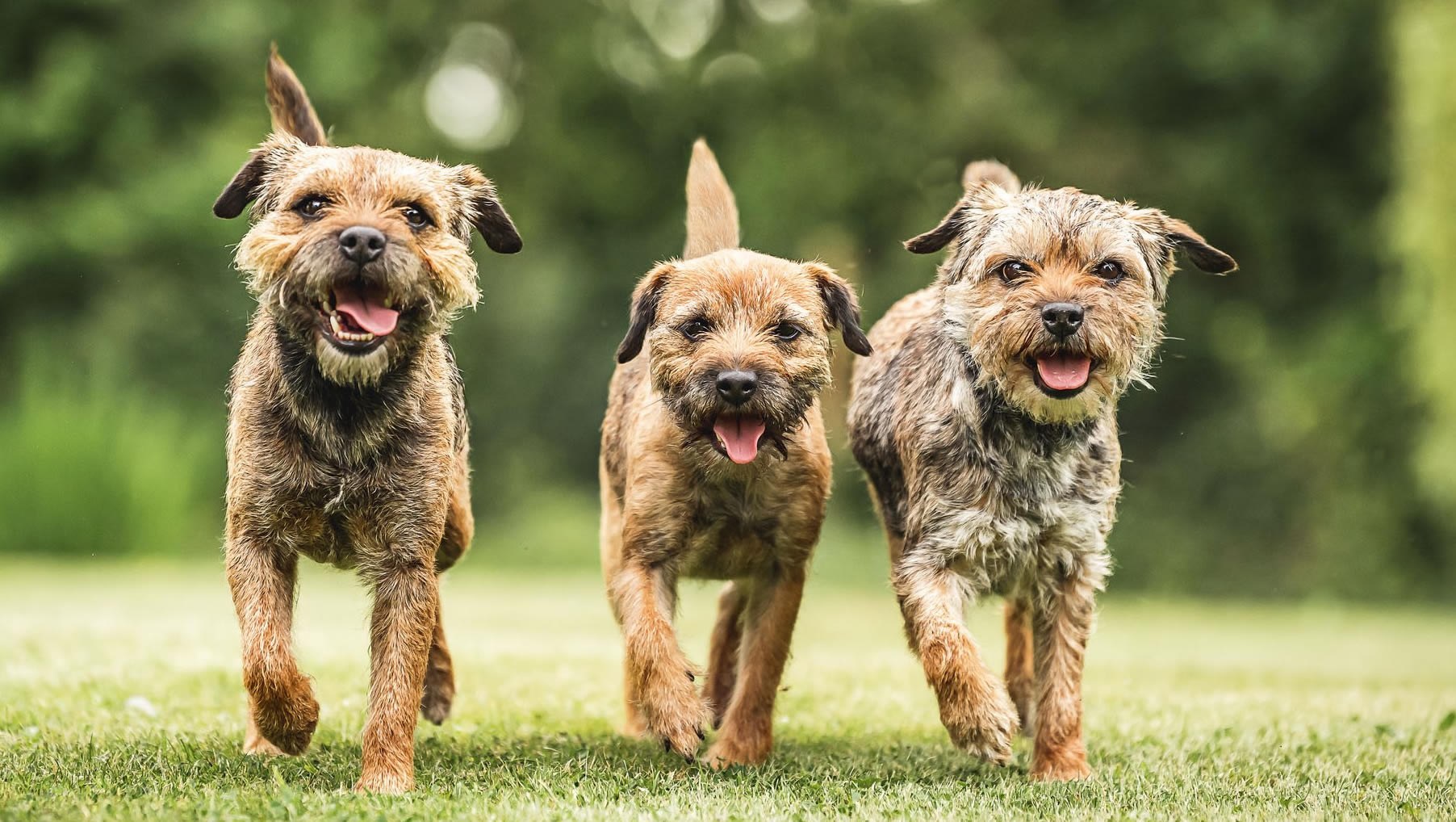A Breed Standard is the guideline which describes the ideal characteristics, temperament and appearance of a breed and ensures that the breed is fit for function. Absolute soundness is essential. Breeders and judges should at all times be careful to avoid obvious conditions or exaggerations which could be detrimental in any way to the health, welfare or soundness of this breed.
From time to time certain conditions or exaggerations may be considered to have the potential to affect dogs in some breeds adversely, and judges and breeders are requested to refer to the Kennel Club website for details of any such current issues. If a feature or quality is desirable it should only be present in the right measure.
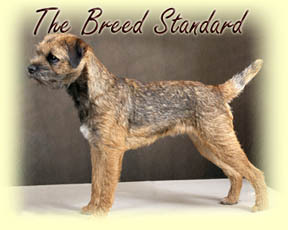 General appearance
General appearance
Essentially a working terrier.
Characteristics
Capable of following a horse, combining activity with gameness.
Temperament
Active and game as previously stated.
Head and Skull
Head like that of an otter. Moderately broad in skull, with short strong muzzle. Black nose preferable, but liver or flesh coloured one not a serious fault.
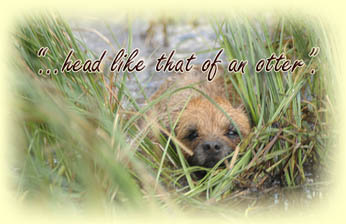
Eyes
Dark with a keen expression.
Ears
Small, V-shaped; of moderate thickness, and dropping forward close to the cheek.
Mouth
Scissor bite, i.e. upper teeth closely overlapping lower teeth and set square to the jaws. Level bite acceptable. Undershot or overshot a major fault and highly undesirable.
Neck
Of moderate length.
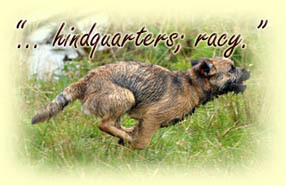 Forequarters
Forequarters
Forelegs straight, not too heavy in bone.
Body
Deep, narrow, fairly long. Ribs carried well back, but not oversprung, as a terrier should be capable of being spanned by both hands behind the shoulder. Loins strong.
Hindquarters
Racy.
Tail
Moderately short; fairly thick at base, then tapering. Set high, carried gaily, but not curled over the back.
Feet
Small with thick pads.
Gait
Has the soundness to follow a horse.
Colour
Red, wheaten, grizzle & tan or blue & tan.
Size
Weight: dogs: 6-7 kgs (13-15½ lbs); bitches: 5-6.5 kgs (11½ -14 lbs).
Faults
Any departure from the foregoing points should be considered a fault and the seriousness with which the fault should be regarded should be in exact proportion to its degree and its effect on the terrier's ability to work and the health and welfare of the dog.
Note - Male animals should have two apparently normal testicles fully descended into the scrotum.
But what are Border Terriers actually like though?
Border Terriers are, as the standard says, essentially working terriers. They were originally bred to assist in the control of foxes in the border country between Northumberland and Scotland. Even though you may want a Border Terrier purely as a pet; you cannot deny their heritage and instinct....especially when out for a walk and they despatch a passing mouse!
Sometimes this instinct can cause them to 'turn a deaf ear' to your calls when out; but if you work on a good, consistent, reliable recall as a pup this should help in this type of situation.
It is very important that you socialise and train a Border early on, as without this they could become a real handful later on as although they love to please, they do have an independent streak.
A training class with someone who has experience of many different breeds is an excellent idea. A trained Border is a happy Border (with an even happier owner!).
Beware though not to give harsh corrections as Borders do not respond to this type of training. They much prefer to please you, and so positive reinforcement is the way to go.
Due to their heritage, they do have quite a high 'prey drive' (like most terriers) but you can channel this drive into great games of chasing and playing with balls, which provide hours of fun for your dog and good exercise.
Even the best trained Border will give you the deaf ear at some point, usually while chasing rabbit or deer! You must be aware of this instinct when taking on a Border.
Many Borders live quite happily with cats, having been introduced to them as pups; but outside the home environment they may not be quite so tolerant of other cats!
Borders are intelligent and game dogs; they love to be 'doing' but after the day's adventures appreciate a cuddle on the couch.
For the most part they are very biddable and adaptable. They are a no-nonsense breed that loves to be part of whatever activity the family is involved in; be it showing, agility, obedience, hiking, cycling, sailing or gardening!
However, beware of a bored Border; they'll find something to entertain themselves with, whether it is chewing, digging or trying to find a way out of your garden. It is essential that your garden is secure. Keep their minds and bodies busy though and you'll be rewarded with a content companion. On the whole; Borders are a healthy and hardy breed not afflicted with the types of conditions seen in some other breeds.
Much is said of the Border's double coat. It has a harsh outer coat to provide protection and a soft undercoat to provide warmth. The top coat needs 'hand-stripping' a couple of times a year to allow the new coat to grow through.
What can I do with my Border Terrier?
An easier question would be what CAN'T I do with my Border Terrier?! They are a versatile breed that can turn their paw to many activities. Borders can be found working very successfully in many disciplines; conformation showing, agility, obedience, HTM, terrier racing, working vermin, flyball, therapy dogs and of course being great company for those who love to walk.
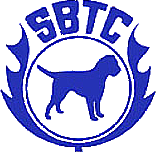
![CHAMPION PLUSHCOURT THE BEES KNEES IN THORALDBY [PORTO WINNER 2011] Breed Standard](/images/Bizzy-Pictures-028.JPG)
